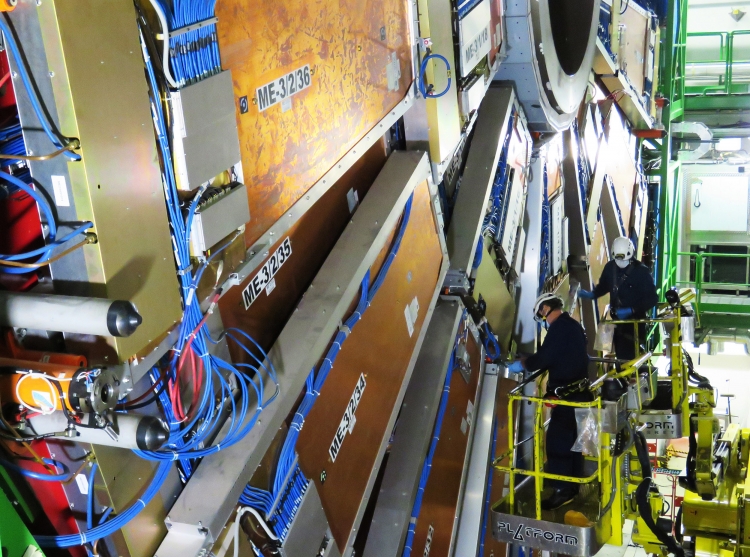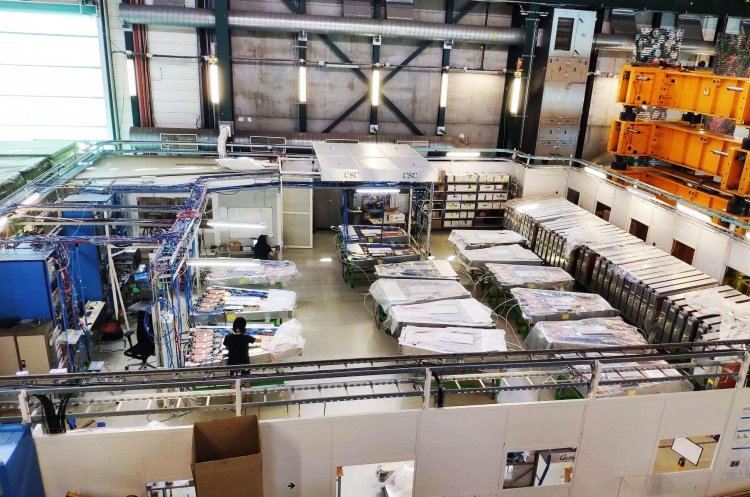


The Compact Muon Solenoid (CMS) Muon System is undergoing major upgrades during Long Shutdown 2 (LS2), preparing for the High Luminosity LHC (HL-LHC). The Large Hadron Collider will be upgraded to significantly increase the luminosity (frequency of proton collisions) expanding its physics program. Accordingly, the CMS Muon System must sustain a physics program that maintains high sensitivity to both precision measurements and new physics searches. For the Cathode Strip Chamber (CSC) muon detectors, installed in the forward regions of the CMS Muon System, the increase in luminosity poses some unique challenges.
The CMS Cathode Strip Chambers (CSCs) consist of positively charged anode wires and negatively charged cathode strips arranged inside a gas volume. Muons ionize the atoms of the gas, inducing a pulse in the strips and wires. This pulse is read out and processed by several electronic boards mounted on top of the chamber.
In order to be ready for the HL-LHC, the CSCs need upgraded electronics to cope with the new conditions. The current electronic readout system would suffer data losses, especially in regions with high particle rates. New electronics have been developed, with high speed optical links and more powerful processors, to handle the higher particle rates and chamber occupancy with no data loss.
Most of the electronics upgrade of the CSCs is happening during LS2 since the chambers will not be accessible during LS3 (planned between 2025 and mid-2027). They are being extracted from CMS and brought to the lab on the surface, where the electronic boards located on the chambers are being replaced. The new electronics are then thoroughly tested, including a 48-hour test to spot early life failures. Finally, the electronics are also tested by taking data using cosmic ray muons which traverse the chambers. The CSCs are then sent back underground to be reinstalled in CMS. A total of 1332 electronics boards on 180 CSCs (one third of the whole CSC system) need to be refurbished during this shutdown.
The CMS Muon System upgrade is particularly important in supporting the physics program of the HL-LHC. A defining feature of the CMS detector is the ability to detect muons with a high spatial resolution and to measure their momentum. Muons carry important informations about high energy physics processes occurring at the LHC. Most of the time they do not decay and are not stopped within the detector so the muon chambers are a unique tool to identify and measure them.
Time-lapse video from 2019 operations showing the process of CSC chamber extraction from the CMS endcap.

